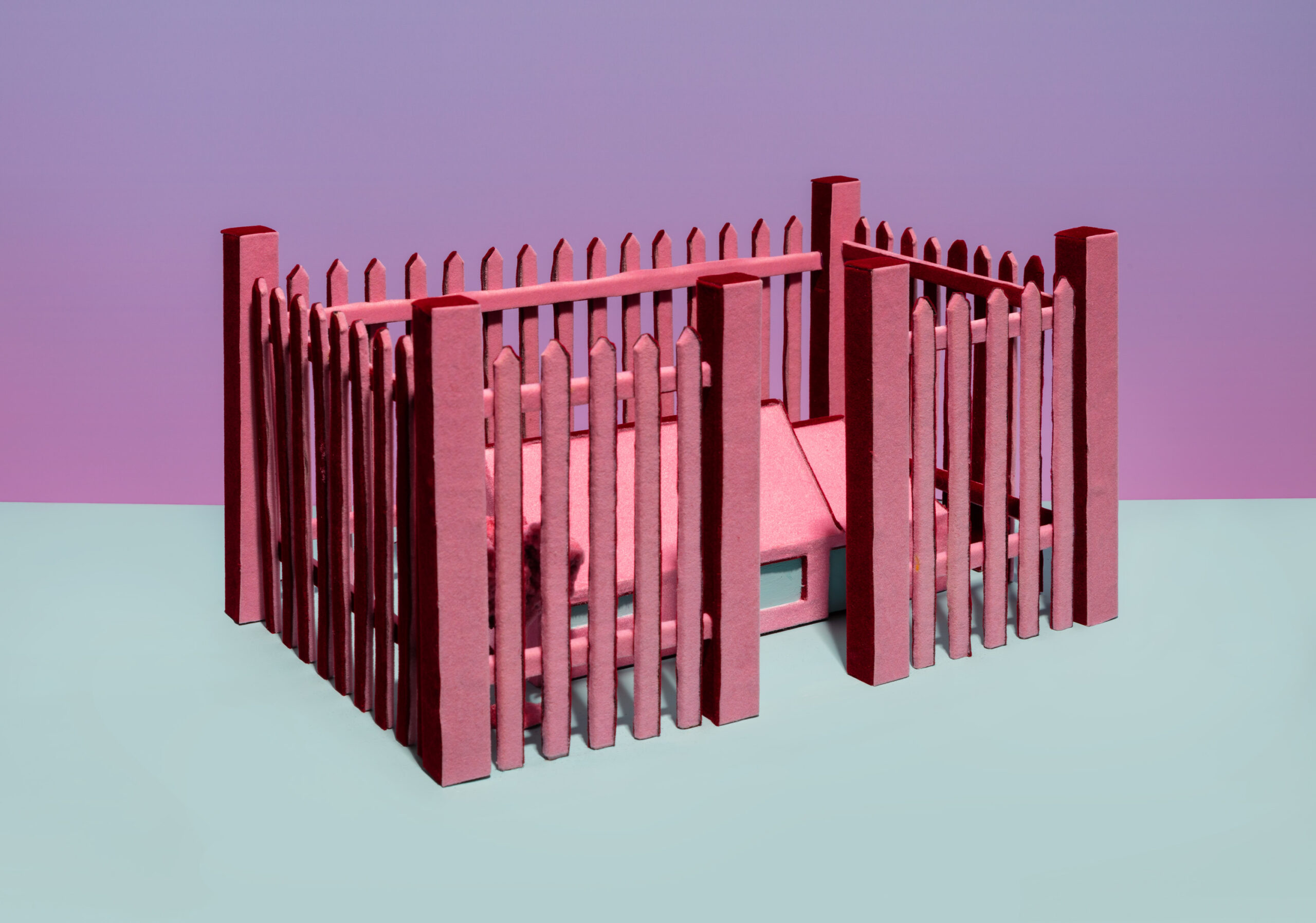
August 30, 2022
Parallel exhibitions by artists Johannah Herr and Jean-Marc Superville Sovak will open in the Shirley Fiterman Art Center (SFAC) at Borough of Manhattan Community College (BMCC/CUNY) on September 15 and remain on view through December 22.
“I Have Seen the Future: The American Home,” is an immersive exhibition by Johannah Herr and focuses on the 1939 and 1964 World Fairs in Queens — with the hindsight of 2022. The exhibition delves into propaganda that circulated 20th-century visions of a utopia that promoted “white flight” and excluded people of color.
“The Price of Half-Freedom: Manuel de Gerrit de Reus; Enslaved, Condemned, Pardoned and Freed, 1641-1644,” an installation by Jean-Marc Superville Sovak, examines the experience of the first enslaved Afro-Dutch residents of what is now New York City, and the events that led to their emancipation: a murder, a trial and a failed execution.
“The Price of Half-Freedom” reframes historical narratives surrounding slavery in the United States

“The Price of Half-Freedom” features work by Jean-Marc Superville Sovak and is based on the story of Manuel de Gerrit de Reus, one of the first enslaved people brought to New Amsterdam, the capital of New Netherland, by the Dutch West India Company.
New Amsterdam was a provincial extension of the Dutch Republic from 1624 to 1644. The English renamed the colony “New York” when they seized it from the Dutch.
Manuel de Gerrit de Reus and other enslaved laborers were crucial in developing the colony’s infrastructure, building roads and defensive walls, and clearing, cultivating and protecting the land.
In 1641, Manuel de Gerrit de Reus and eight other enslaved people confessed to the murder of Jan Premero, who was also enslaved by the Dutch, and leveraged their collective value to secure for themselves and others, a conditional form of freedom 200 years before the Emancipation Proclamation, an executive order issued by U.S. President Abraham Lincoln, and which changed the legal status of more than 3.5 million African Americans from enslaved to free.
“The Price of Half-Freedom” includes video, historic documents, a sculptural brick work and a sequence of large-scale prints on fabric representing de Reus and the eight others. The bodies used to portray these men are appropriated from prints by Dutch artist Peter Paul Rubens and the images of their faces are taken from the work of a number of other major European painters.
“The choice to appropriate Rubens’ work relates to his unprecedented visibility and fame,” sayd SFAC Director Lisa Panzera. “As a diplomat for the Dutch Republic and a major figure in art history, Rubens is a perfect symbol of the longstanding interconnectedness between art and politics.”
In his practice as a multidisciplinary artist, Sovak examines the history and legacy of colonialism and seeks to reframe the historical narratives surrounding slavery—as well as art history—in the United States.
“I Have Seen the Future” examines how two iconic World Fairs melded utopian visions and racially restrictive practices
“I Have Seen the Future” recalls the tens of millions of visitors who flocked to Flushing Meadows, Queens, to see visions of the American Dream at the World’s Fairs in 1939 and 1964.

“This exhibition presents a specific narrative that melds American consumerist capitalism with politics and international relations,” says Director Panzera. “Through a unique sensibility, Herr exposes the underbelly of that dream, focusing on the American home and exposing the ways that utopian vision is mired in cruel policies and practices that enforce segregation, wealth, income inequality and the general exclusion of people of color.”
Herr’s installation features architectural models that represent imaginary pavilions from the World’s Fair. The display is also accompanied by patterned wallpaper that references 1960s interior design and subtly contains language of racially restrictive covenants of postwar housing.
“I Have Seen the Future: Official Guidebook,” a collaboration between Johanna Herr and Cara Marsh Sheffler, expands the exhibition’s themes through imagery, text and subverted advertisements.
“White Flight Model Home,” also a collaboration between Herr and Marsh Sheffler, invites gallery visitors to to step inside a future-oriented, perfectly manicured place fit for the Space Age nuclear family.
The model is accompanied by this imaginary community’s monthly circular, “White Flight!” which demonstrates how suburban fences were not so much made of white pickets as they were emblematic of discriminatory banking practices, and actively excluded anyone of color.
Visit the exhibitions in person, with proof of vaccination
The Shirley Fiterman Art Center is in Lower Manhattan at 81 Barclay Street, New York, NY 10007.
The Shirley Fiterman Art Center gallery hours are Wednesday, Thursday and Friday from 12 noon to 5 p.m. and by making an appointment by contacting shirleyfitermanartcenter@bmcc.cuny.edu or (212) 776-5630.
Please note that all visitors to the Shirley Fiterman Art Center MUST provide proof of COVID-19 vaccination, using either Excelsior Pass or their CDC card.
The Shirley Fiterman Art Center of Borough of Manhattan Community College, CUNY, is dedicated to organizing exhibitions of contemporary art and cultural programming through which it seeks to promote and enrich the educational mission of BMCC and serve as a resource for the college and Lower Manhattan communities. The Shirley Fiterman Art Center believes strongly in the role of education and advocacy through art, including matters of identity, equity, inclusion, and social justice, and in the preservation of the artistic and historic legacies of Tribeca and Lower Manhattan. For more information, visit: bmcc.cuny.edu/sfac.
The Shirley Fiterman Art Center supports BMCC’s strategic goals including Strategic Goal #6: Strengthen BMCC’s Role in a Thriving NYC and as a Leading Community College Nationally.
STORY HIGHLIGHTS
- Exhibitions by artists Johannah Herr and Jean-Marc Superville Sovak will be on view in the Shirley Fiterman Art Center from September 15 through December 22.
- “I Have Seen the Future: The American Home,” an immersive exhibition by Johannah Herr, focuses on the 1939 and 1964 World Fairs in Queens and delves into propaganda that circulated 20th-century visions of a utopia that excluded people of color.
- “The Price of Half-Freedom,” an installation by Jean-Marc Superville Sovak, is based on the life of Manuel de Gerrit de Reus, formerly enslaved by the Dutch West India Company in New Amsterdam, a colony renamed “New York” by the English.

